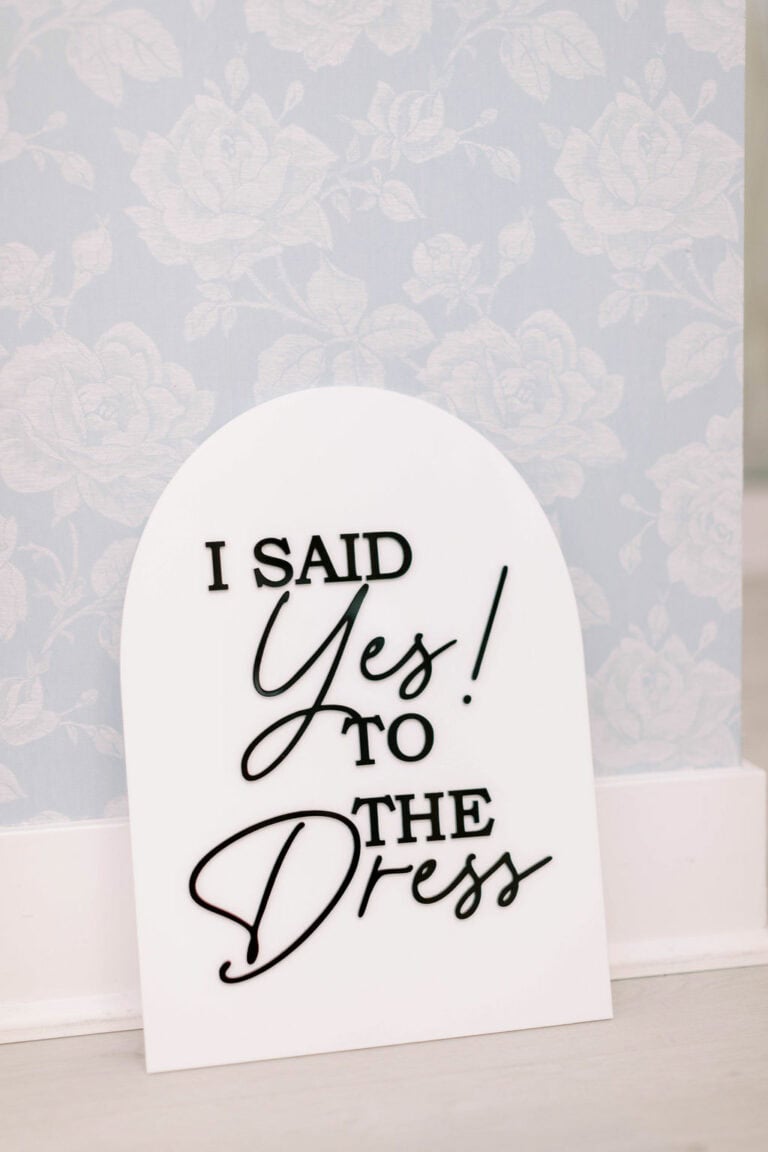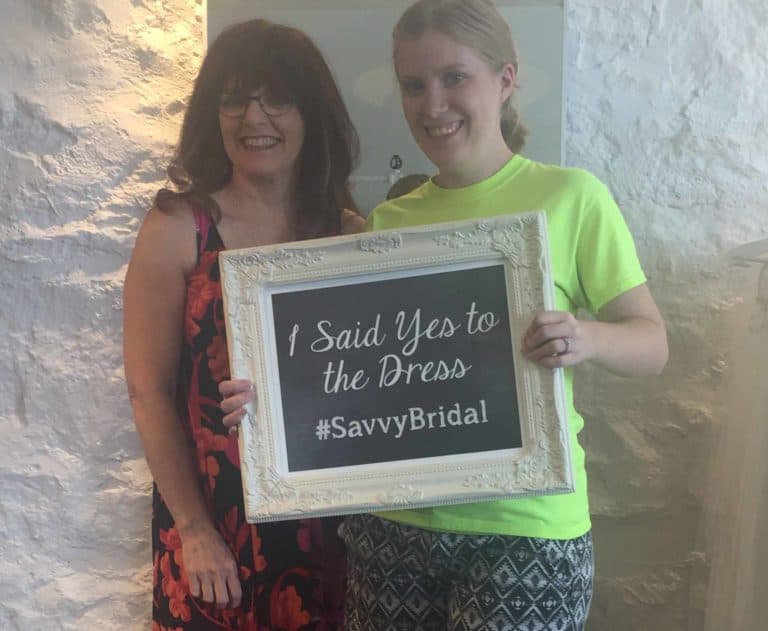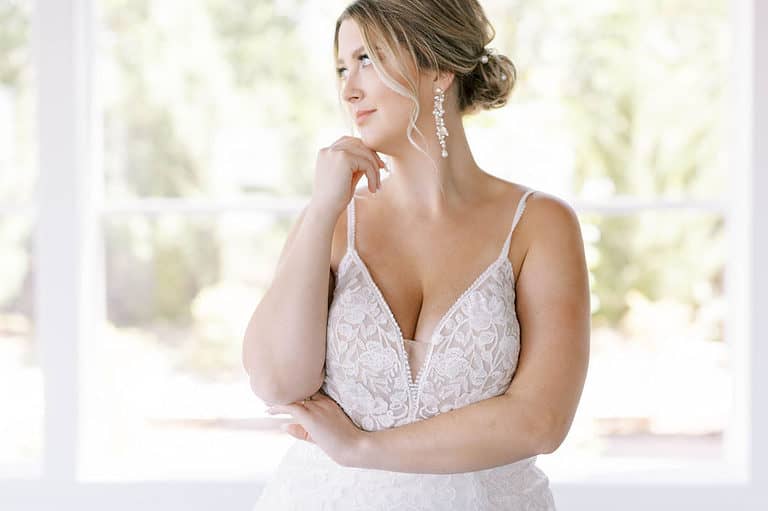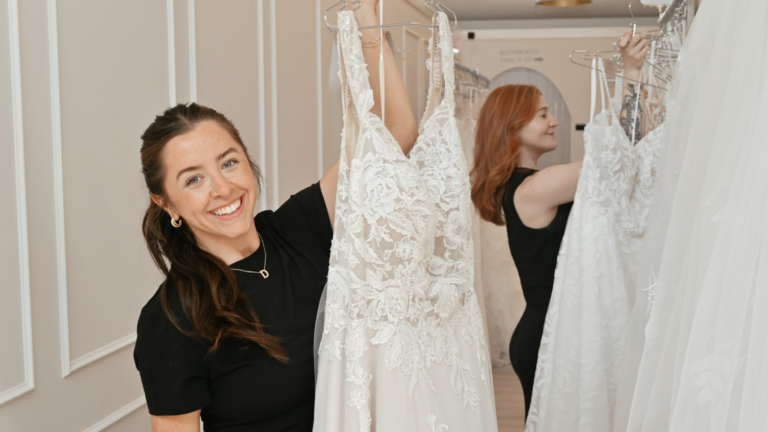Ultimate Guide to Finding a Flattering Wedding Dress Waistline
A wedding dress is more than just the fabric and embellishments it’s made of—it’s the silhouette that shapes your dream day look. With so many wedding dress waistline options, finding the perfect one for you can be overwhelming.
But don’t worry; our ultimate wedding dress waistline guide will help you navigate the tricky world of waistlines.
How to Measure Your Waist
Knowing where your natural waist is and its correct measurement are helpful starting points when shopping for a wedding dress. Here’s the best practice to measure your waist for a wedding dress, ensuring an accurate and comfortable fit on your big day:
- Find Your Natural Waist: Your natural waist is the narrowest section of your torso, usually just above the belly button. You can locate it easiest by feeling the indent between your rib cage and hips.
- Remove Baggy Clothing: Remove any clothing that might get in the way of the tape measure, like bulky sweaters or high-waisted pants.
- Stand Tall, Breathe Naturally: Don’t suck in your stomach or hold your breath while measuring, as this will give you inaccurate numbers.
- Wrap Tape Measure: For best results, use a tailor’s tape measure, which is a flexible measuring tape made to measure parts of the body. Hold the end of the tape to your natural waist and comfortably wrap it around your back, keeping it parallel to the floor.
- Find Snug But Comfortable Fit: The tape measure shouldn’t dig into your side, but you also want to ensure it’s not too loose either. You should be able to slip one finger comfortably between your body and the tape.
A few additional tips for measuring your waistline for a wedding dress include taking multiple measurements, asking a friend for assistance, and measuring again after eating. This ensures that the measurement is accurate and comfortable.
Types of Wedding Dress Waistlines
The waistline of a wedding dress, where the bodice meets the skirt, plays a crucial role in shaping your silhouette on the big day. Below are some of the most common wedding dress waistlines you’ll find when gown shopping:
1. Natural Waist
A natural waistline will sit at the narrowest part of your torso, usually just above the belly button. It’s typically the most common waistline you’ll see on wedding dresses due to it creating a balanced, proportional silhouette on many body types.
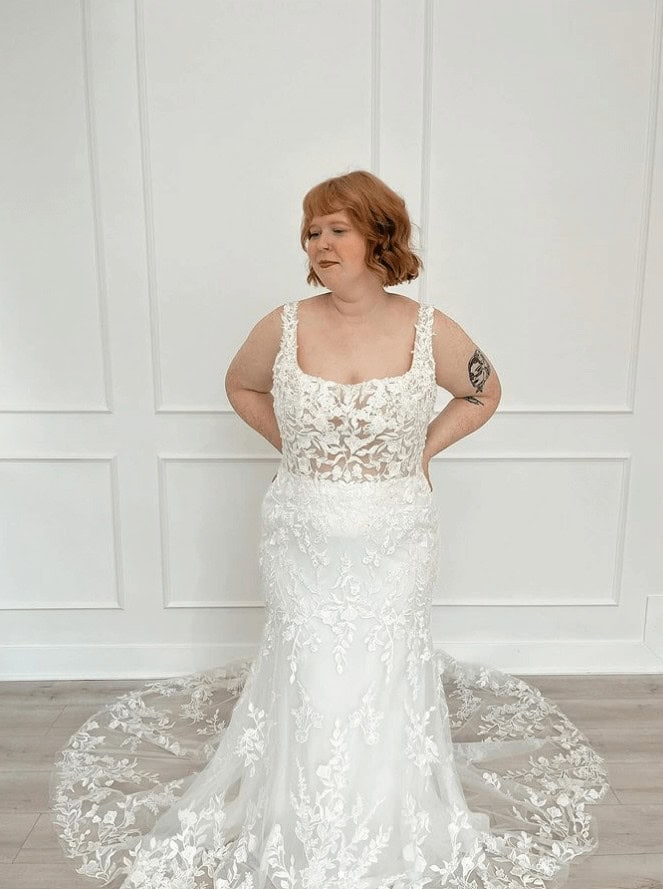
2. Dropped Waist
A dropped waistline looks almost exactly as it sounds. It sits lower than your natural waist, often at the hipbone and sometimes slightly below. A wedding dress with a dropped waist creates a vintage, 1920s-inspired look while also making your legs appear longer.
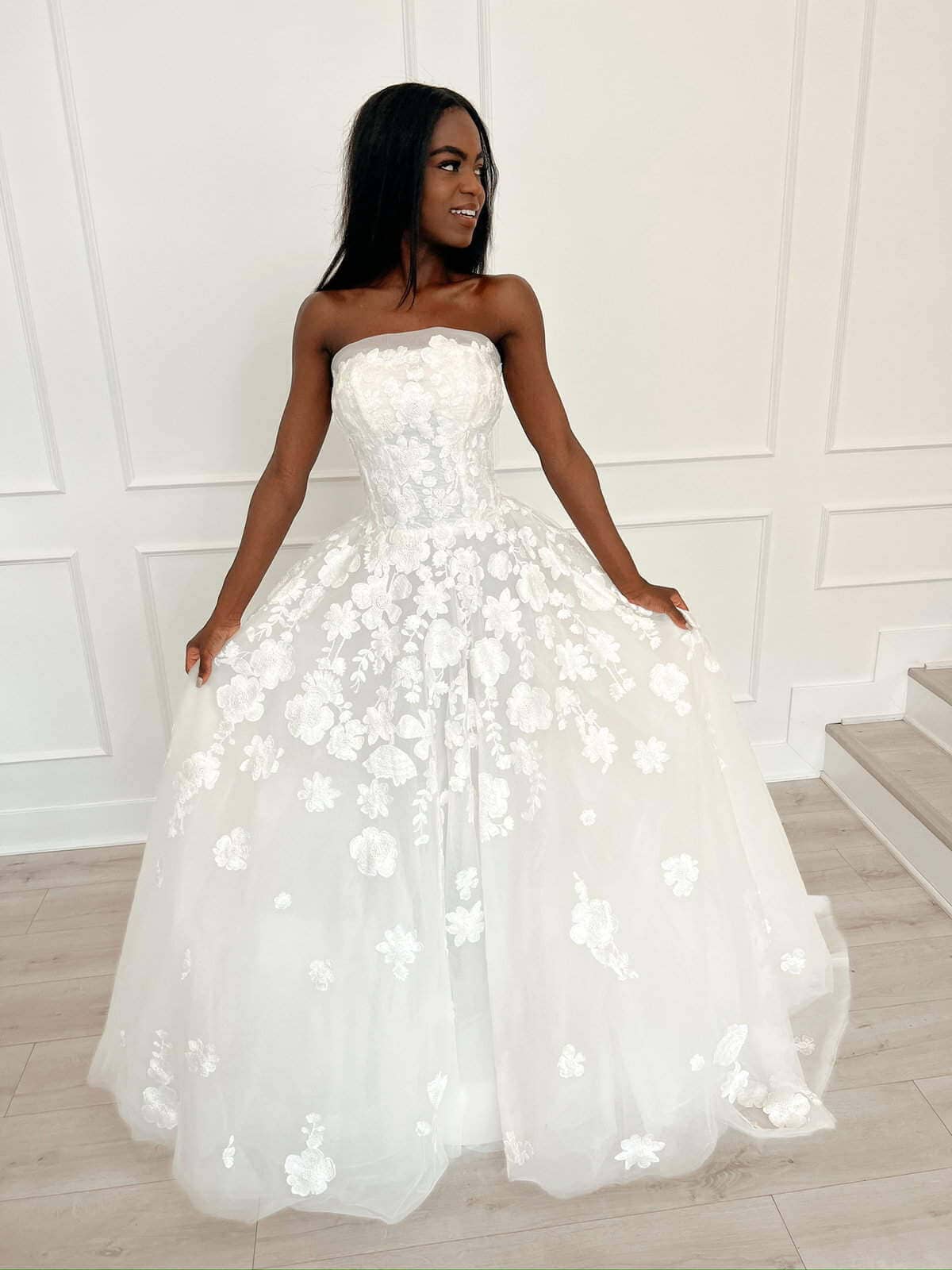
3. Empire Waist
An empire waistline sits high above the natural waist, typically just below the bust area. It creates a flowy, ethereal look and elongates the torso. It’s an ideal waistline for brides looking to hide the midsection and shift eyes to other aspects of the dress.
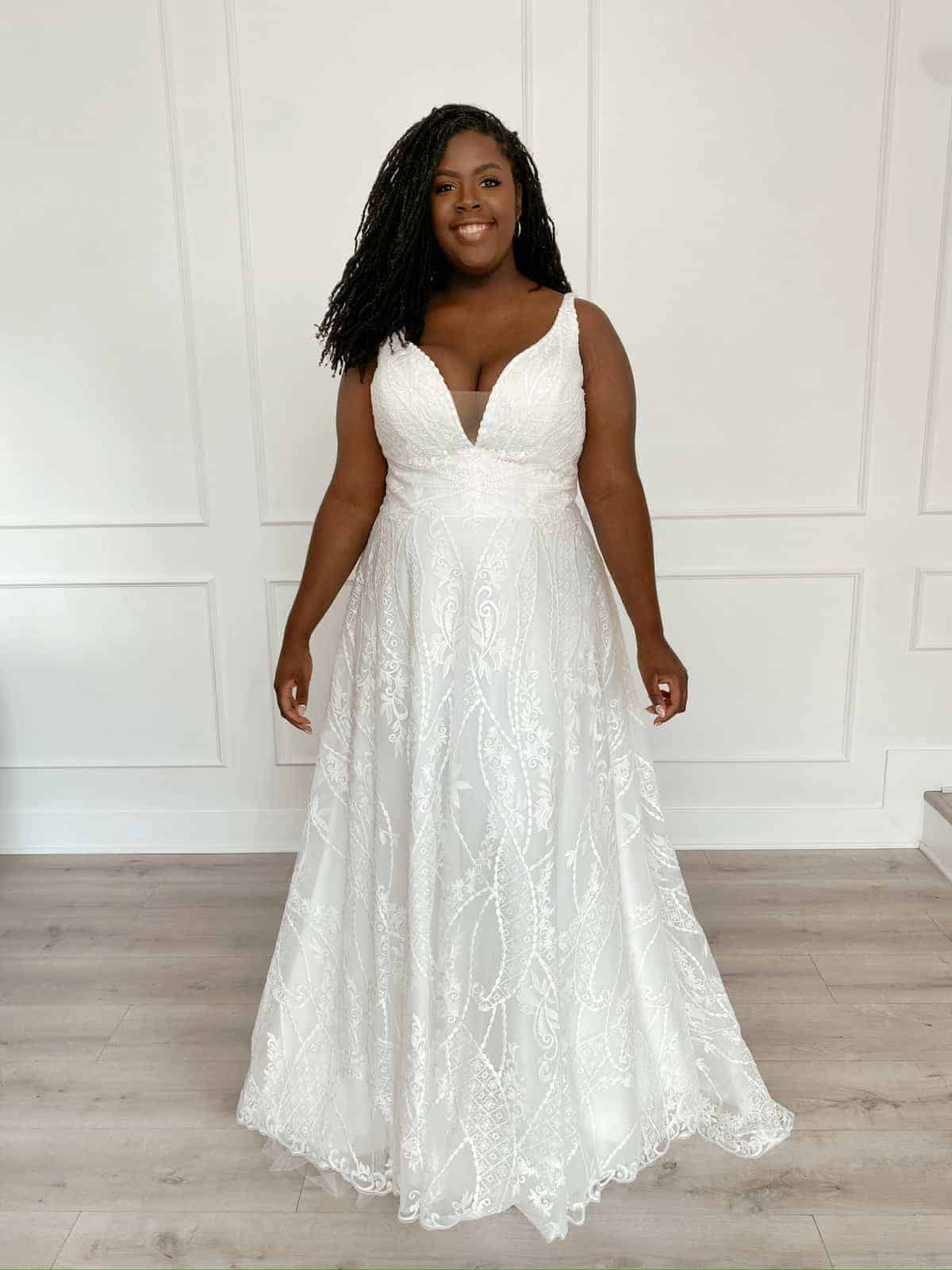
4. Basque Waist
A basque waistline features a fitted bodice that dips below the natural waist before flaring out again. It visually cinches the waist, creating a dramatic, vintage-inspired silhouette.
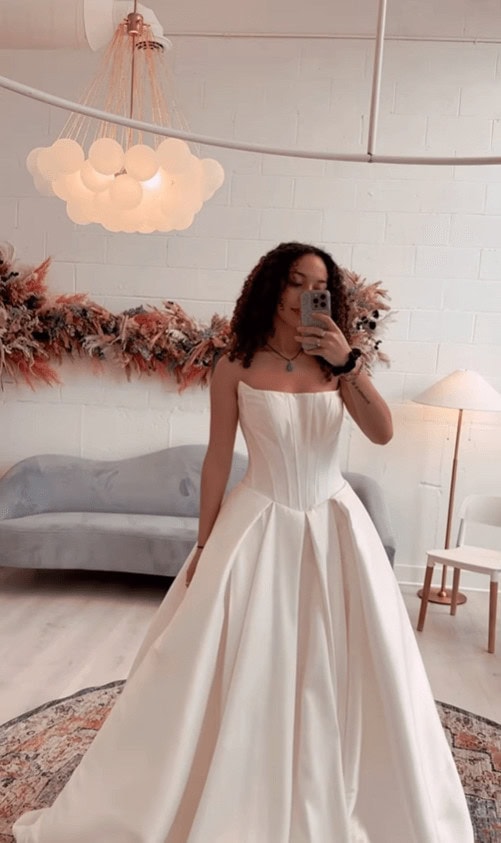
5. Illusion Waist
An illusion waistline isn’t a specific seam, but rather a design technique. By using sheer fabric panels, strategic seaming, or bodice overlays, this style creates the appearance of a defined waist without a true cinch or seam.

Understanding Your Body Type
Now that you know your waist measurement and the common types of wedding dress waistlines, knowing your body type is the next step in finding a wedding dress waistline that accentuates your natural figure.
Below, we’ve compiled a list of flattering wedding dress waistlines for the most common body types so you can find the perfect wedding dress to enhance your unique silhouette.
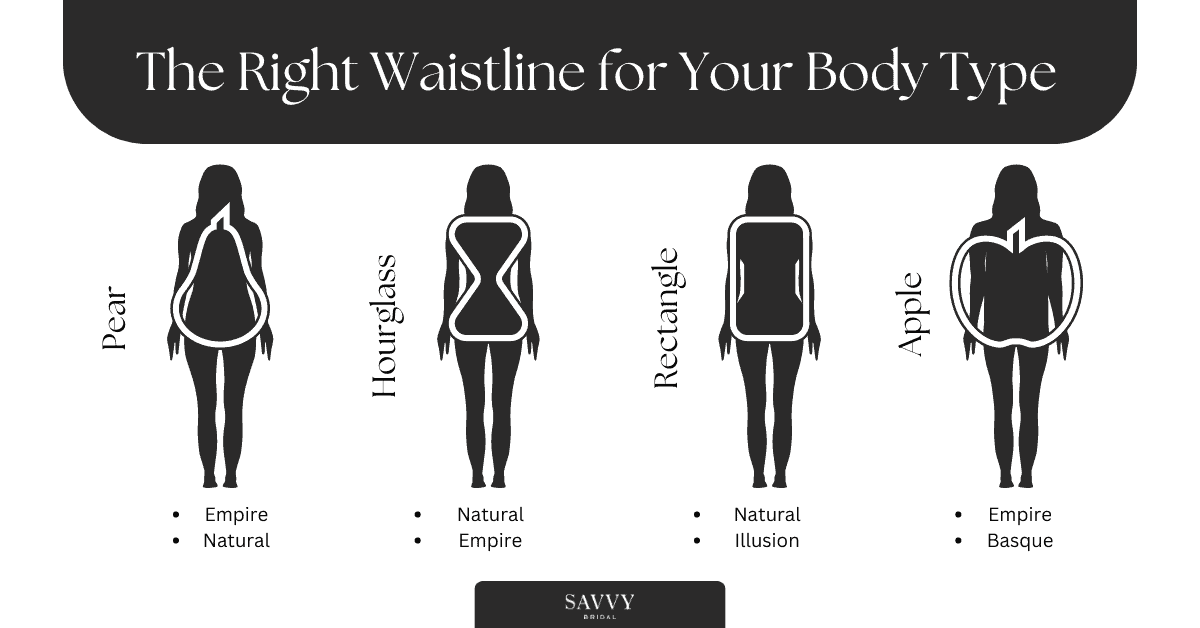
1. Hourglass
An hourglass body type can usually be defined as someone whose bust and hips look balanced, with a defined waist. This figure has a lot of versatility when choosing a wedding dress waistline that naturally enhances their silhouette.
Natural waistlines highlight their curves, empire waistlines create a slim silhouette and elongate the torso, and dropped waistlines can add a touch of vintage elegance. There are definitely many wedding dress waistline options for the hourglass body type bride.
2. Pear
Someone with a pear body shape can be described as having hips wider than the bust area and a well-defined waist. An empire waistline is ideal for a bride looking to balance their proportions by drawing the eye upwards.
To show off a bit more of the natural figure, A-line silhouettes with natural waistlines are also very flattering for the pear body shape.
3. Apple
A bride with an apple body type is typically described as someone with a broader waist compared to the bust and hip areas, often with a fuller bust. Brides with this body shape tend to opt for dresses that carry more volume down below to help balance proportions.
Empire waistlines and A-line silhouettes with a slightly higher waist usually look the most flattering to elongate the torso, as do ball gowns with a basque-type waist that accentuates the curviness up top while providing volume down below.
4. Rectangle
The rectangle body shape is where the bust, waist, and hips are all relatively similar in size, with little emphasis on the waist. This evenly proportionate body type benefits from wedding dress waistlines that create definition and curves where there might not be much natural distinction between the waist and hips.
Some wedding dress waistlines that pair best with a rectangular body type include natural waistlines to help define the waist and create an hourglass silhouette, or illusion waistlines that are incorporated into dresses using princess seams or wrap techniques.
At Savvy Bridal, our experienced stylists are passionate about helping brides find their perfect dress. Explore our stunning collection of wedding dresses with various waistlines and styles, and let us help you find the perfect one at either our Kansas City or St. Louis locations.

